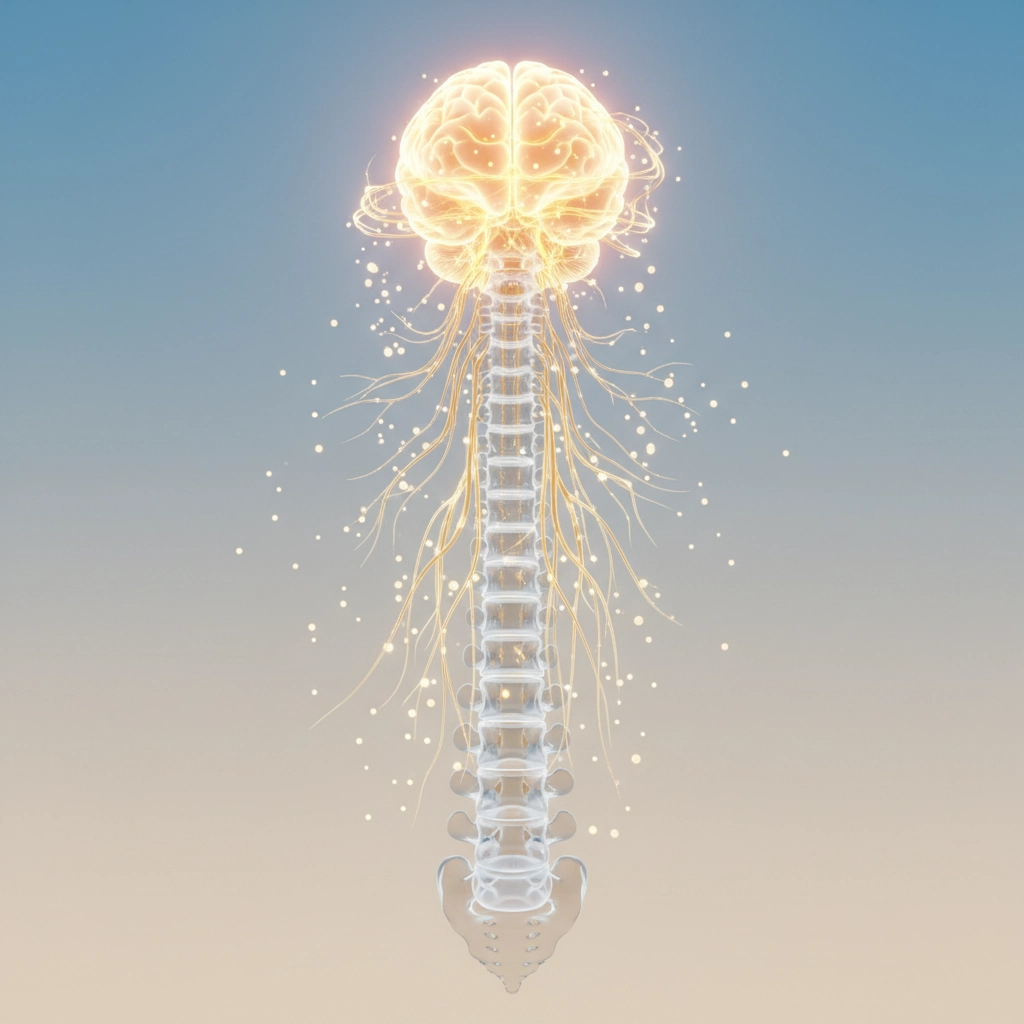Posture and Your Brain: Science-Backed Relief for Pain and Stress
- davidpartnertech
- Nov 14
- 4 min read
By Joana Talafré
Your posture isn't just about looking confident: it's literally rewiring your brain. Every slouch, every forward head position, every collapsed chest is sending signals to your nervous system that shape how you feel, think, and process pain. The emerging neuroscience reveals something remarkable: changing your posture can be one of the most direct ways to influence your brain's stress response, emotional regulation, and pain perception.
The Brain-Body Feedback Loop
When we talk about posture in NeuroSomatic Therapy, we're not discussing aesthetics. We're exploring a sophisticated communication network between your spine and your brain. Research shows that approximately 90% of your brain's stimulation and nutrition comes from spinal movement¹. Think about that: your posture is literally feeding your brain information about whether you're safe or under threat.

Your brain interprets postural collapse as a stress signal. When you slouch, your nervous system shifts into a subtle fight-or-flight mode, releasing cortisol and activating neural pathways associated with threat detection. This isn't conscious: it's happening at the level of implicit memory, where your body remembers patterns of safety and danger.
The Vagus Nerve Connection
Here's where the science gets fascinating. Your posture directly affects your vagus nerve: the longest cranial nerve that connects your brain to major organs. Poor posture decreases vagal tone, which correlates with increased stress, anxiety, and negative emotions².
When you maintain an upright, aligned posture, you enhance vagal tone. This activates your parasympathetic nervous system: your "rest and digest" mode: which helps regulate stress, improve mood, and support clearer thinking. It's like giving your nervous system a gentle reminder that you're safe.
How Posture Affects Your Brain's Key Regions
Advanced neuroimaging studies reveal that posture directly influences multiple brain areas:
The Prefrontal Cortex: Your executive function center becomes less efficient with poor posture due to reduced oxygen flow and increased cognitive load from managing discomfort.
The Cerebellum: This region, crucial for balance and coordination, receives less accurate feedback when your spine is misaligned, affecting both physical and mental coordination.
The Brainstem: Poor posture activates threat-detection centers, keeping you in a subtle state of alertness that drains mental energy.
The Limbic System: Emotional regulation becomes more difficult when postural stress signals compete with other neural processes³.

The Oxygen Factor
When you slouch, your chest compresses and your diaphragm can't expand fully. This restricts oxygen intake, directly affecting brain function. Reduced oxygen produces brain fog, fatigue, and headaches: symptoms many of us accept as "normal" when they're actually postural⁴.
People with upright posture perform better on memory tasks, think more clearly, and maintain better focus throughout the day. It's not willpower: it's physiology.
Chronic Pain and Postural Memory
In our Montreal clinic, we see how poor posture creates a vicious cycle with chronic pain. When your brain receives misaligned sensory input from poor posture, it develops an incorrect interpretation of your body in space. This leads to compensatory patterns, muscle tension, and eventually chronic pain⁵.
But here's the hopeful part: because this is largely a nervous system issue, it's changeable. Your brain's neuroplasticity means you can retrain these patterns through conscious awareness and gentle practice.
The Stress-Posture Spiral
Stress affects posture, and posture affects stress. When you're anxious or overwhelmed, your body naturally contracts: shoulders rise, chest collapses, breathing becomes shallow. This postural collapse then sends feedback to your brain that reinforces the stress response.
Breaking this cycle requires interrupting the pattern at the postural level. Research shows that even two minutes of upright posture can influence mood and boost confidence by altering neural pathways⁶.

Gentle Postural Awareness Practices
The key to postural change isn't forcing rigid alignment: it's developing gentle awareness. Here are some nervous system-friendly approaches:
Micro-Movement Check-ins: Every hour, take three conscious breaths and notice your posture without judgment. Simply observe where you are in space.
The Crown of Head Awareness: Imagine a gentle string pulling the crown of your head toward the ceiling. This engages your deep postural muscles without creating tension.
Breath-Posture Integration: When you notice yourself slouching, use your exhale to gently release, and your inhale to naturally lengthen your spine.
Walking Meditation: Even five minutes of conscious walking, feeling your feet connect with the ground, helps reset your postural patterns.
The NeuroSomatic Approach
In NeuroSomatic Therapy, we understand that lasting postural change happens through the nervous system, not through muscular force. We work with your brain's natural capacity to reorganize patterns, using gentle movements and awareness practices that feel safe to your system.
This isn't about perfection: it's about connection. When you tune into your body with curiosity rather than criticism, you create the conditions for natural, sustainable change.
Beyond the Physical
What makes this work so powerful is that improving your posture simultaneously addresses multiple symptoms: chronic pain, anxiety, brain fog, and stress. It's not treating symptoms separately: it's working with the underlying nervous system patterns that create them.
Your posture is a form of self-communication. Every time you consciously choose alignment over collapse, you're sending your brain a message of safety, strength, and presence. This message reverberates through every system in your body.
Ready to Explore Your Postural Patterns?
Understanding the neuroscience is just the beginning. If you're curious about how your unique postural patterns might be affecting your nervous system, we offer two paths forward:
Practice Along: Try our gentle postural awareness session on YouTube: Conscious Posture Practice
Go Deeper: Book a NeuroSomatic Therapy session to discover your specific patterns and learn personalized practices for lasting change. Contact us to begin your journey.
References:
Spinal movement and brain nutrition research, Journal of Neurophysiology
Vagal tone and postural studies, Autonomic Neuroscience Journal
Neuroimaging and posture research, NeuroImage Journal
Oxygen saturation and posture studies, Respiratory Physiology
Chronic pain and postural patterns, Pain Medicine Journal
Postural confidence studies, Journal of Health Psychology


Comments